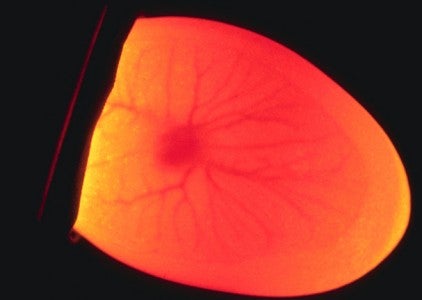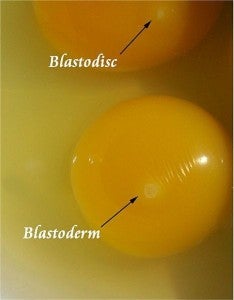Is Your Rooster Doing His Job? Confirm Fertilzation to Prevent Egg Waste.
A large part of farming is raising your own chickens for eggs and/or meat. In a lot of cases, farmers may purchase eggs or day old chicks to raise, but beyond that many take interest in raising their own chickens. A necessity to the egg raising process is a virile rooster, of course, and he needs to be fertile in order for eggs laid to be able to hatch, but how do you know if your rooster is not only ready and willing but also able to hit the mark?
One of the main reasons it is vital to have a fertile rooster is for the successful hatching of chicks. If you intend to raise future generations of egg layers or meat birds without purchasing those individuals, both your hens and rooster will need to mate successfully. It is unfortunate to have a hen lay eggs and then waste the 21 day incubation period sitting on those that will not hatch. This wastes precious egg laying time not only during those 21 days but also during the time it takes a broody hen to start laying again afterwards, which can vary amongst birds.
There are many reasons a rooster may not be performing successful matings with the hens in his charge. For one thing, the ratio of hens to rooster needs to be realistic, which is typically about 10-12 hens per rooster. Try though he might to mate with all hens present, there may simply be too many for him to mate with each hen in turn, or he may play favorites, mating mostly with those he prefers. It is also possible that a rooster could be faced with infertility due to age. It may appear that he is doing his part to ensure egg fertilization when in fact he is just going through the motions which results in egg waste. It will then be necessary to retire that rooster should you wish to continue raising chicks.
A quick and easy way to check the ability of your rooster to continually fertilize his hens is through candling. This method has been practiced for many years through the use of specialized lights (sold at farm and garden stores) held up to the egg. The goal is to locate the embryo to confirm a life is growing inside. In some cases, instead of being able to the see the actual embryo, the egg will instead appear opaque, which is another sign of a successful mating. As you candle eggs over the course of a few days, it will be possible to observe a growing embryo and shrinking air sack, although soonest visible are blood vessels. If the egg is not fertilized, the yolk will appear to float free and have a more uniform coloration.
An alternative to candling involves actually cracking the egg open to check for fertilization, which is counter-productive if you wish for those eggs to hatch. However, this could be done intermittently to ensure your rooster’s performance or simply to sate your curiosity before you are ready to begin hatching eggs. As you crack the egg, take care not to bust the yolk as this will make it difficult to see the telltale signs of fertilization. Pour the shell contents into a bowl or pan of contrasting color and look for a white spot. If that spot is solid, it is a blastodisc and is not fertilized. However, if it presents as a bullseye, you have a blastoderm which is fertilized and would hatch under ordinary circumstances.
After mating, fertilized eggs will be laid as soon as two days and hens can go on to lay fertilized eggs for up to three weeks from that very same mating. In the event that you wish to pair a certain rooster and hen, it will be necessary to keep that hen free of rooster exposure for three weeks in order for her to lay eggs from the future pairing you desire. Then, once that mating is complete, arm yourself with the proper light and candle resulting eggs for confirmation of a successful mating. Though candling can be a tough skill to master, once you have some experience under your belt, it is sure to save disappointment down the road as well as egg waste at the same time.







 Your Privacy Choices
Your Privacy Choices
Leave a comment